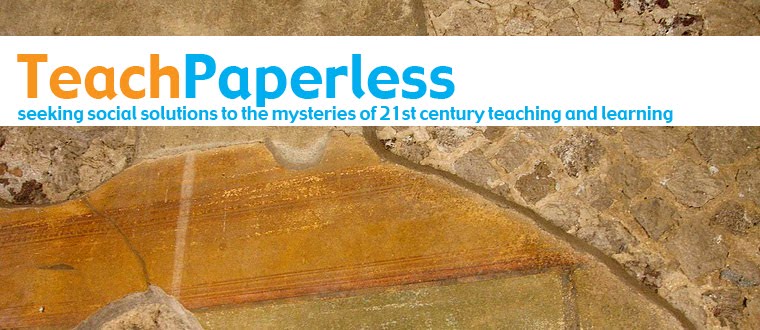Friday, October 16, 2009
Share the Globe
Despite our best intentions, we're still having a one-sided conversation.
With one side of a screen, that is.
I'm just about done with laptops. It's time to move on. Last night, as I looked into the foreheads of all of my ed school students as they gazed intently upon their screens, (I'm sure they were, um, taking notes...), I realized that we're doing this all wrong.
We're using the paper idea of a flat surface to read from as a medium for divining the knowledge and resources of a post-paper paradigm.
That's folly.
And so, I've been thinking about alternatives to the screen that really allow for shared communal experience in a way appropriate to the media.
And, for classroom use, this is what I think I'd like to see...
First of all, get rid of the desks. Bring in round tables; each will have a series of electrical outlets as well as ethernet ports and USB plug-ins. Those USB plug-ins lead to the computer housed under or within each table.
The computer works as a sort of virtual server that can display both individual desktops and collaborative desktops simutaneously (computer geeks, help me with the lingo here... I'm afraid I'm about to go a bit Sci-Fi).
The five students around the table will be able to plug in their handhelds to the table, slide open the tabletop to reveal keyboards, and work communally via the computer which is projecting both independent and shared aspects of a desktop into a large translucent globe in the center of the table.
In the globe, the students can move things around to see their own work as well as the individual work of their peers and the communal site. The teacher, or any student in the room, or any expert anywhere in the world invited into the class, can also 'take over' each globe for whatever purpose of presenting ideas.
Now, I've seen these sphere screens at Goddard Space Flight Center, so I know that's not totally science-fiction. The trick is to set them as the center of learning areas and to make the internal projections both collaborative and accessible from within and without the classroom.
And most importantly, the key is to make the Web-based side of the learning literally transparent to everyone -- students and teachers alike.
The Web after screens.
I've even got a tagline: Why stare at a screen when you can share the globe?
Someone find me investors.
With one side of a screen, that is.
I'm just about done with laptops. It's time to move on. Last night, as I looked into the foreheads of all of my ed school students as they gazed intently upon their screens, (I'm sure they were, um, taking notes...), I realized that we're doing this all wrong.
We're using the paper idea of a flat surface to read from as a medium for divining the knowledge and resources of a post-paper paradigm.
That's folly.
And so, I've been thinking about alternatives to the screen that really allow for shared communal experience in a way appropriate to the media.
And, for classroom use, this is what I think I'd like to see...
First of all, get rid of the desks. Bring in round tables; each will have a series of electrical outlets as well as ethernet ports and USB plug-ins. Those USB plug-ins lead to the computer housed under or within each table.
The computer works as a sort of virtual server that can display both individual desktops and collaborative desktops simutaneously (computer geeks, help me with the lingo here... I'm afraid I'm about to go a bit Sci-Fi).
The five students around the table will be able to plug in their handhelds to the table, slide open the tabletop to reveal keyboards, and work communally via the computer which is projecting both independent and shared aspects of a desktop into a large translucent globe in the center of the table.
In the globe, the students can move things around to see their own work as well as the individual work of their peers and the communal site. The teacher, or any student in the room, or any expert anywhere in the world invited into the class, can also 'take over' each globe for whatever purpose of presenting ideas.
Now, I've seen these sphere screens at Goddard Space Flight Center, so I know that's not totally science-fiction. The trick is to set them as the center of learning areas and to make the internal projections both collaborative and accessible from within and without the classroom.
And most importantly, the key is to make the Web-based side of the learning literally transparent to everyone -- students and teachers alike.
The Web after screens.
I've even got a tagline: Why stare at a screen when you can share the globe?
Someone find me investors.
Subscribe to:
Post Comments (Atom)








Ooh, I like this. Make it happen, please!
ReplyDeleteI'm pretty tired of the cinema-style classroom too. More real-time collaborative 3-D wiki interactive globe madness, please.
Do you know Sugar? It's part of the OLPC project. Consider it a non-traditional laptop.
ReplyDelete